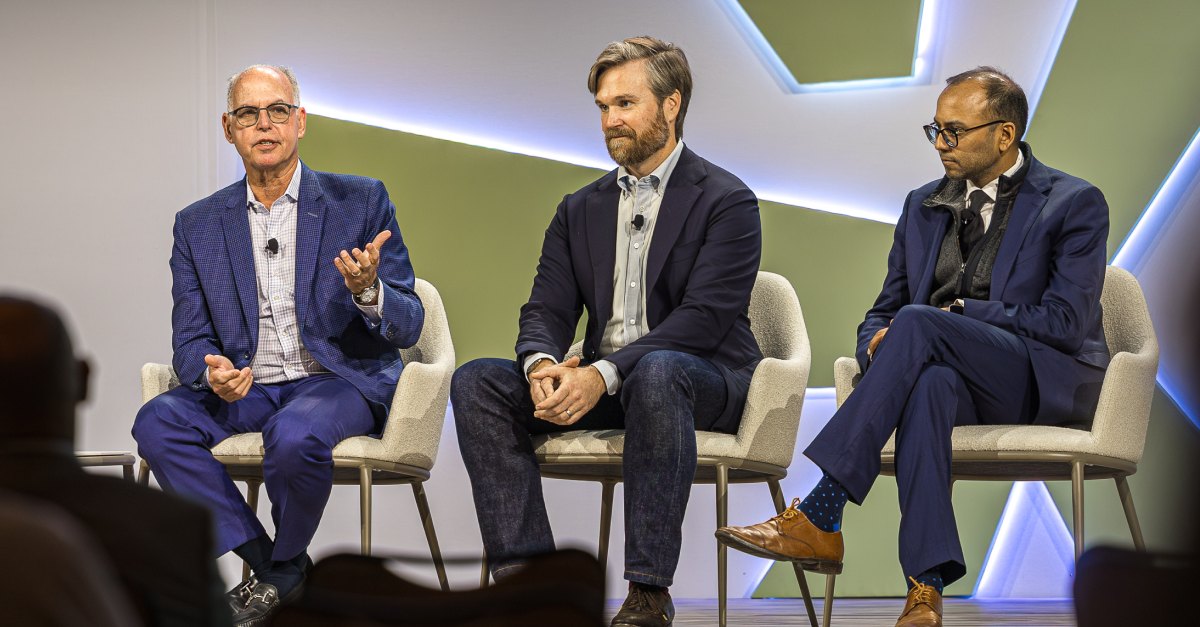As an industry, healthcare is in critical condition.
Decades of hiring, training, and retaining a massive workforce have predominantly been focused on treating the symptoms and not the root cause of what ails the industry.
“Healthcare administrators typically, even if the money is tight, often have no way of thinking about doing a process other than just adding FTEs,” said Dr. Robert Wachter, Professor and Chair of the Department of Medicine at UCSF. “And they know that’s an expensive thing to do, but it’s what we have. We’ll hire more people to do billing, or more people to do scheduling, or more people to manage the phones.”
As a result, a whopping 62% of healthcare C-Suite executives surveyed by Guidehouse and the Healthcare Financial Management Association (HFMA) said the state of their workforce is expected to negatively impact their 2023 growth strategy.
How did we get here?
Believe it or not, healthcare’s digital transformation is still very much in its infancy.
“In 2008, fewer than one in ten American hospitals had an electronic health record,” said Dr. Wachter. “By 2017, fewer than one in ten did not. So it was really over the past ten to fifteen years that medicine went from fundamentally an analog industry, to mostly a digital industry.”
Digital transformation, combined with a global pandemic saw the workforce in virtually every industry undergo tremendous change. Employees dramatically reprioritized what’s important in a career, with everything from compensation and company culture to leadership and work-life balance becoming critical factors in what is commonly referred to as The Great Reshuffle.
Nowhere is this more apparent than in healthcare, where staffing challenges have exploded across both clinical and administrative functions. Top turnover causes include extremely long hours, highly stressful work environments, tedious, manual processes, tasks that must be repeated hundreds of times daily, and ever-rising care demands.
As a result, the American Hospital Association suggests “...there will be a shortage of up to 3.2 million health care workers by 2026.” Today’s reality is that there are simply not enough candidates to fill open positions that exist throughout the care continuum.
Something has to change.
Identifying a path forward
At present, there are at least three potential paths forward, none of which include simply hiring more staff.
Aggressively pursue retention strategies
Potential administrative staff continues to find employment in retail or service industries that may offer better pay and a significantly less stressful work environment. In an effort to counteract this trend, health systems have begun to double down on pursuing various recruitment and retention strategies.
“Most hospitals are fighting a losing battle to hire, train, and staff their departments,” said revenue cycle executive Cheri Kane. “Hiring is difficult at best, and salaries are skyrocketing at a dizzying rate.”
A report from Kaufman Hall found that virtually all (98%) of hospital and health system executives had raised their starting salaries or minimum wage. Going a step further, a majority of respondents had also introduced signing bonuses (84%), increased opportunities for remote or hybrid work schedules (76%), retention bonuses (73%), and more attractive shift differentials to alleviate off-hours and weekend coverage staffing challenges (58%).
Investing in people is always a good strategy, it just can’t be the only one.
Reimagine the way work gets done
As the industry continues to undergo a complete digital transformation, there are multiple opportunities to reevaluate processes, procedures, and overall information flows in order to find more efficiency. Everything should be on the table – from employee onboarding, to how tasks are delegated, to how different departments communicate and collaborate. The challenge lies in developing a deep understanding of how new digital tools work, and then completely re-thinking things like workflows and staffing models. Like it or not, this is a long-term endeavor.
“This takes 10 or 20 years,” said Dr. Wachter. “Because you've got to then build the culture, the people, the structures, the incentives to truly re-imagine the work.”
Reevaluate the tech stack
Following the aggressive digital transformation from recent years, what’s now becoming clear is that many of those investments were solely focused on digitizing what were previously analog processes and tasks. Things like moving from paper-based patient charts to an electronic health record, or written physician notes to notes typed on a laptop or tablet.
Given current staffing challenges, simply digitizing the work does not go far enough.
For example, providing patients with a digital option to schedule appointments with a physician is a logical step. However, if on the back end, staff are still required to take the requested appointment data, double-check the physician’s actual availability, and manually input the appointment into a calendar, that technology solution should be heavily scrutinized and likely eliminated. Instead, health systems should be evaluating technology, in part, on its ability to completely eliminate manual work for their staff.
“It’s time for us to realize fully that our workforce problems will not now, or ever, be solved by better recruitment strategies, stronger engagement efforts or wage increases,” wrote Aaron Crane, National Chairperson, at HFMA. “There is, however, tremendous opportunity to be gained from more urgently embracing technology, including robotics, artificial intelligence and everything else in this space.”
Learn how executives from Reid Health, Castell, and Good Shepherd are solving workforce challenges by augmenting their EHR without hiring more staff.










